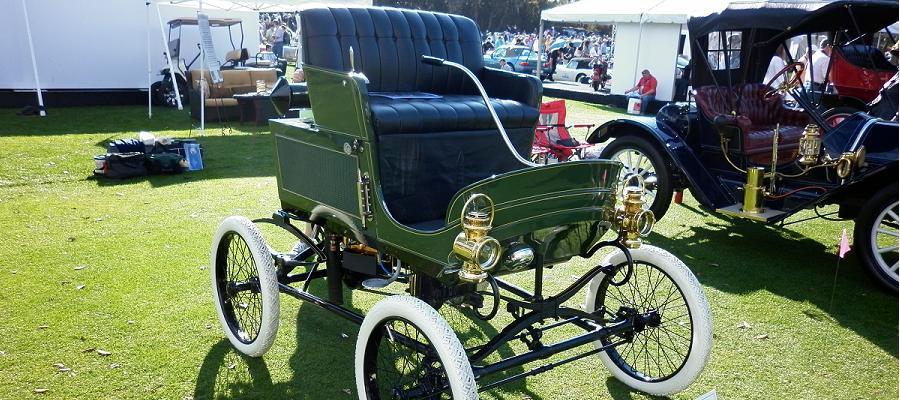1901 Toledo Steam Carriage

The descriptions of the Classic Cars in the Directory were partly generated or supplemented with the help of artificial intelligence (AI). The content may occasionally not always be entirely accurate or factually correct despite careful checking.
The Toledo Steam Carriage 1901 is a pioneering vehicle that combined steam power and internal combustion engine to produce an advanced mode of transportation. The car was built with a sturdy wooden frame and steel panels that provided rigidity and excellent aerodynamics, allowing it to traverse through rough terrain with ease.
The engine of the Toledo Steam Carriage 1901 was placed in the front, and it featured a state-of-the-art, water-cooled, two-cylinder engine that generated up to 15 horsepower. The engine had a pair of feedwater pumps, allowing it to produce steam at an outstanding pressure of 500 PSI, and was responsible for powering the front wheels.
The Toledo also had a gasoline engine that could be used when the steam engine wasn't available, allowing the steam generator to cool down while the gasoline engine took over. This was a vital feature that allowed the Toledo to stay on the move even during extended drives, without worrying about the steam engine overheating.
The steam engine was equipped with a forced-fan condenser that helped generate additional power and controlled the amount of steam that produced. The Toledo also had a powerful boiler that could produce steam for a good 20 minutes or more, meaning that drivers would not have to stop frequently to refill the fuel tank.
The vehicle had a length of approximately 14 feet, with a wheelbase of 107 inches, which allowed plenty of room for passengers and ample space for carrying goods. The vehicle's four wheels were extremely rugged and durable, measuring 34 inches in diameter and 4 inches in width.
The Toledo's steering was also unique, featuring a tiller mechanism that made it easy for the driver to maneuver the vehicle in any direction. The tiller could be adjusted, giving the driver excellent control and precision.
The Toledo Steam Carriage 1901 was a breakthrough innovation in the automotive industry, showcasing the possibilities of combining steam power and gasoline engines. The Toledo's technical advancements made it an ideal vehicle for long hauls, rough terrains, and daily commute. It remains a significant milestone in automobile history that set the groundwork for future engineering advancements.
Milestones
- Toledo Steam Carriage was introduced in 1901. - It was designed by Gordon Buehrig and built by the American Bicycle Company. - The car was powered by a horizontal twin Inverted engine, which generated steam. - It had a top speed of 35 mph and could travel up to 100 miles on a single tank of water. - The Toledo Steam Carriage was the first successful steam-powered car manufactured in the United States. - In 1902, the American Bicycle Company changed its name to The National Motor Vehicle Company, and production of the Toledo Steam Carriage continued. - However, due to the rise of gasoline-powered cars, production of the Toledo Steam Carriage ceased in 1903, with only a few hundred having been produced.Technical
- The Toledo Steam Carriage was a steam-powered vehicle. - It was built in Toledo, Ohio in the United States in 1901. - The engine was a single-cylinder steam engine. - The maximum speed of the vehicle was 30 miles per hour. - It had a coal-fired boiler for creating steam. - The vehicle had a capacity of seating six people comfortably. - The Toledo Steam Carriage had a weight of around 2,500 pounds. - It had wooden spoke wheels with solid rubber tires. - The brakes were applied via a hand lever on the rear wheels. - The vehicle was steered via a tiller instead of traditional steering wheel. - The design was inspired by horse-drawn carriages, with a high body and curved seating.